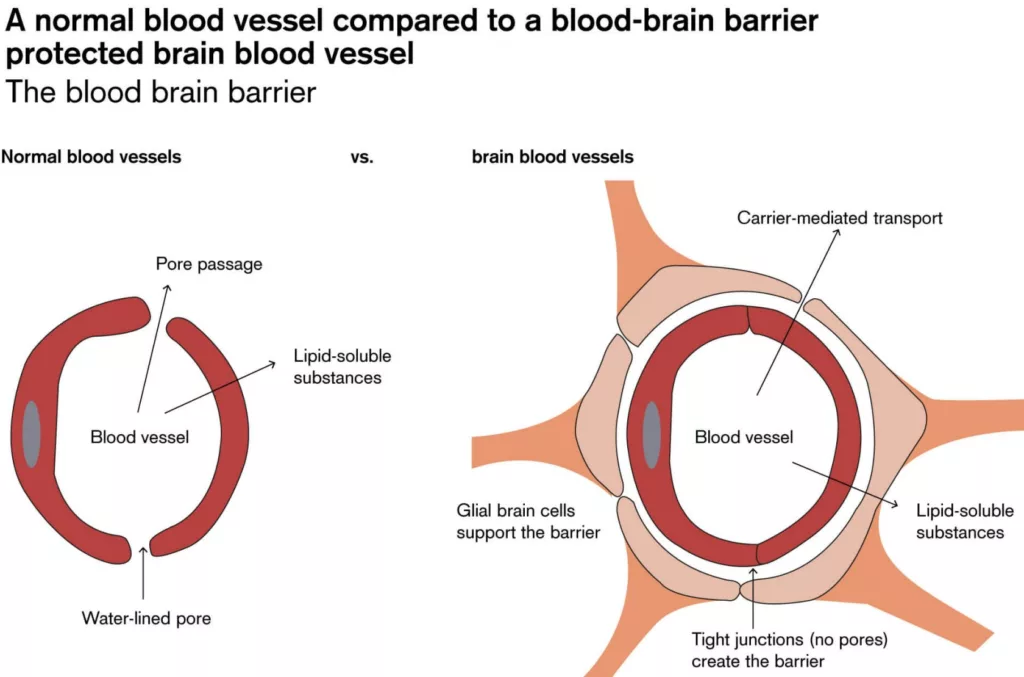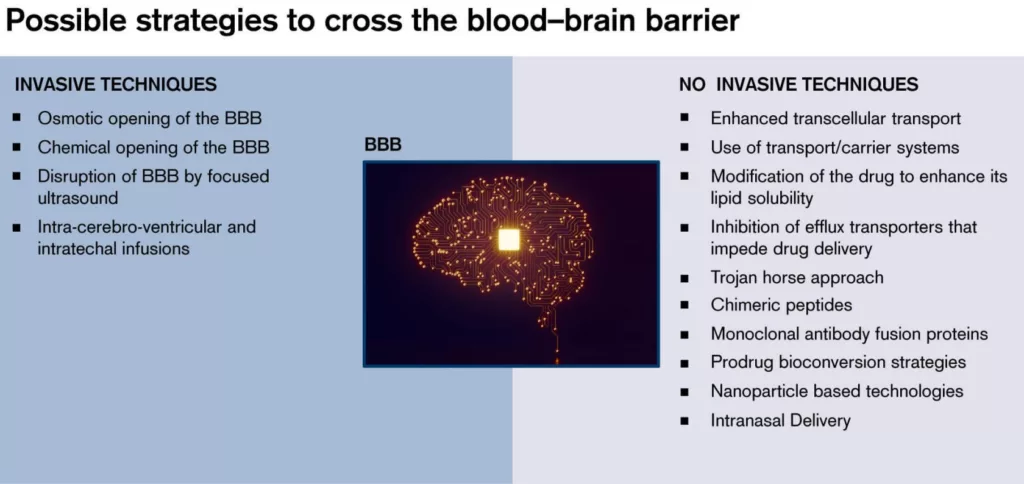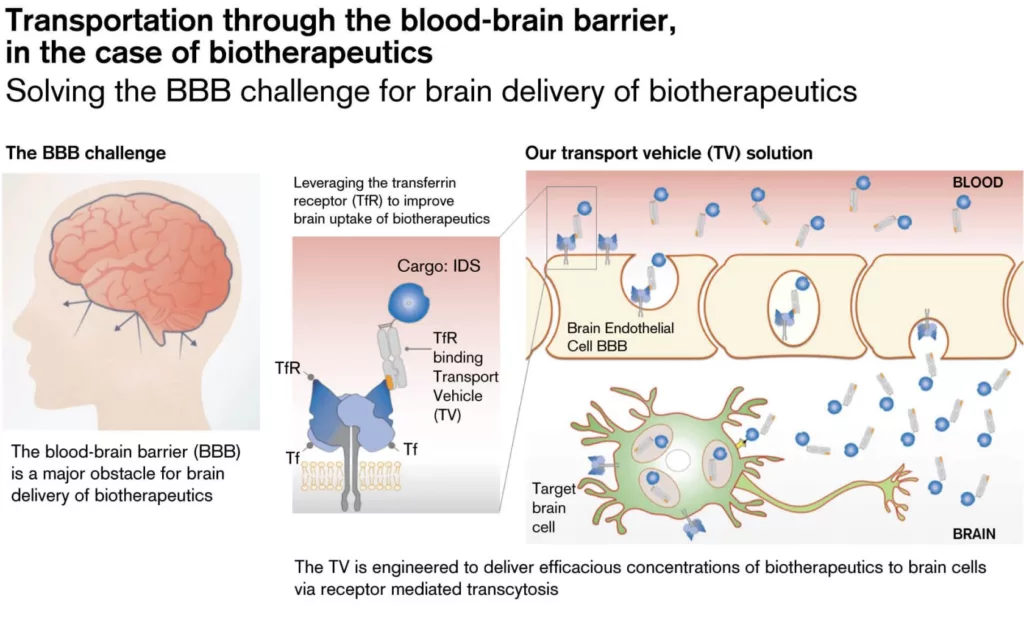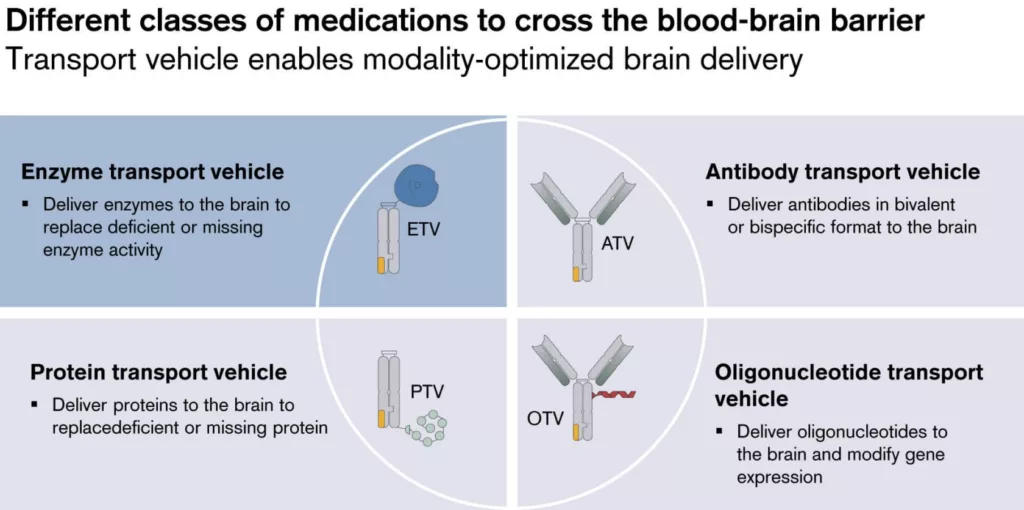Technology enabling the penetration of substances through the blood-brain barrier is a breakthrough development since it enables a targeted drug delivery to the brain. Due to demographic ageing, neurodegenerative brain diseases are becoming more common, so any progress in this area will offer significant benefits to patients, their relatives, and the health care system as a whole.
As populations age, the prevalence of chronic diseases is rising significantly. Most chronic conditions are age-related and hence, are a major consideration under any health care system. However, as many of the chronic degenerative diseases are located in the brain, they are difficult to target even by modern medicine. Progress in treatment options for diseases such as Parkinson’s, Alzheimer’s, Multiple Sclerosis, to name just three very prevalent ones, has been limited, leading to frustration on the parts of patients and their relatives.
Why has it been that medication being active in the brain has produced so many failures and setbacks? One of the reasons seems to be the existence of the so called blood-brain barrier, also referred to as the BBB, which is shielding the brain from many substances in the blood stream. While it is clear such a protection is important to the brain, it also means that medications that are targeting the brain would find it very difficult to even reach the brain in therapeutically active concentration.
“For many older people, Alzheimer’s, Parkinson’s, and other degenerative brain diseases become a major issue to quality of life. If we can deliver a medication to the brain, progress against those diseases might finally accelerate.”
What is the blood-brain barrier and what does it do?
The blood-brain barrier acts as an additional boundary between the circulating blood and the extracellular space of the brain. The barrier is highly selective, meaning it only allows certain substances to cross from the bloodstream into the brain. This functions to protect the brain from toxins, pathogens, and even circulating neurotransmitters (e.g. glutamate) that can be potentially damaging to neurons if their levels get too high. Only water, certain gases (e.g. oxygen), and lipid-soluble substances can easily diffuse across the barrier (other necessary substances like glucose can be actively transported across the blood-brain barrier with some effort).2

Why do we need the blood-brain barrier?
‘The purpose of the blood–brain barrier is to protect against circulating toxins or pathogens that could cause brain infections, while at the same time allowing vital nutrients to reach the brain.
Its other function is to help maintain relatively constant levels of hormones, nutrients and water in the brain – fluctuations in which could disrupt the finely tuned environment.
So what happens if the blood–brain barrier is damaged or somehow compromised?
One common way this occurs is through bacterial infection, as in meningococcal disease. Meningococcal bacteria can bind to the endothelial wall, causing tight junctions to open slightly. As a result, the blood–brain barrier becomes more porous, allowing bacteria and other toxins to infect the brain tissue, which can lead to inflammation and sometimes death.
It’s also thought the blood–brain barrier’s function can decrease in other conditions. In multiple sclerosis, for example, a defective blood–brain barrier allows white blood cells to infiltrate the brain and attack the functions that send messages from one brain cell (neuron) to another. This causes problems with how neurons signal to each other.’3
When do we need to get through the blood-brain barrier – and how?
The blood–brain barrier is generally very effective at preventing unwanted substances from accessing the brain, which has a downside. The vast majority of potential drug treatments do not readily cross the barrier, posing a huge impediment to treating mental and neurological disorders.
One possible way around the problem is to “trick” the blood–brain barrier into allowing passage of the drug. This is the so-called Trojan horse approach, in which the drug is fused to a molecule that can pass the blood–brain barrier via a transporter protein.
A different approach is to temporarily open the blood–brain barrier using ultrasound.4
To reach a more uniform distribution of medication in the brain, as well as for safety reasons, primarily non invasive techniques are currently targeted for development.

Denali Therapeutics – a platform built around crossing the blood-brain barrier
As a company which is working on a broad platform for brain delivery, Denali Therapeutics has entered into collaborations with Biogen, Takeda, and Sanofi.5 This should not come as a surprise, as a transport mechanism combined with an already established pathway of a drug can offer mutual benefit to both partners.

As amazing as it sounds, to be able to cross the blood-brain barrier for biotherapeutics – Denali Therapeutics works on brain delivery in four different classes of medications. Each of these transportation modalities is a platform in itself, as it can potentially be applied to many different individual medications.

Based on Denali (2022). Denali. Corporate Overview. PDF Investor presentation dated as of September 13, 2022; slide8/9, 08.09.2022.
Conclusion
When we invest into the theme of Digital Health, we are looking for platform solutions that can potentially offer a much better outcome for patients. Compared to other illnesses, degenerative brain diseases are an area of very high unmet need. A healthy brain is considered a major factor in judging quality of life.
Progress in the development of new pharmaceuticals for the treatment of the brain in aging, including Alzheimer’s disease (AD), has been extremely slow because the products of biotechnology, recombinant proteins or gene therapies, are all large molecule pharmaceuticals that do not cross the blood-brain barrier (BBB). Back in 2019, there was not a single recombinant protein that was FDA approved for the treatment of AD, or any other brain disease, wherein the drug has to enter the brain via BBB.6
The blood-brain barrier, while it is a wonderful development by evolution to protect our precious brain from damage, also keeps out medication from reaching the brain. A technology which can make the blood-brain barrier permeable with as much precision as possible could rightfully be considered a key platform enabling us to cross this last frontier, for the good of society.
1 The individuals mentioned above only conduct regulated activities in the jurisdiction(s) where they are properly licensed, where relevant.
2 Know Your Brain: Blood-Brain Barrier (neuroscientificallychallenged.com), accessed 13.09.2022
3 What is the blood-brain barrier? – Queensland Brain Institute – University of Queensland (uq.edu.au), accessed 13.09.2022.
4 What is the blood-brain barrier? – Queensland Brain Institute – University of Queensland (uq.edu.au), accessed 13.09.2022.
5 Denali (2022). Denali. Corporate Overview. PDF Investor presentation dated as of September 13, 2022; slide8/9, accessed 14.09.2022.
6 Frontiers | Blood-Brain Barrier and Delivery of Protein and Gene Therapeutics to Brain (frontiersin.org), accessed 14.09.2022.
To the extent that these materials contain statements about the future, such statements are forward-looking and are subject to a number of risks and uncertainties and are not a guarantee of future results.
This material constitutes marketing material of Credit Suisse Group AG and/or its affiliates (hereafter “CS”). This material does not constitute or form part of an offer or invitation to issue or sell, or of a solicitation of an offer to subscribe or buy, any securities or other financial instruments, or enter into any other financial transaction, nor does it constitute an inducement or incitement to participate in any product, offering or investment. This marketing material is not a contractually binding document or an information document required by any legislative provision. Nothing in this material constitutes investment research or investment advice and may not be relied upon. It is not tailored to your individual circumstances, or otherwise constitutes a personal recommendation, and is not sufficient to take an investment decision. The information and views expressed herein are those of CS at the time of writing and are subject to change at any time without notice. They are derived from sources believed to be reliable. CS provides no guarantee with regard to the content and completeness of the information and where legally possible does not accept any liability for losses that might arise from making use of the information. If nothing is indicated to the contrary, all figures are unaudited. The information provided herein is for the exclusive use of the recipient. The information provided in this material may change after the date of this material without notice and CS has no obligation to update the information. This material may contain information that is licensed and/or protected under intellectual property rights of the licensors and property right holders. Nothing in this material shall be construed to impose any liability on the licensors or property right holders. Unauthorised copying of the information of the licensors or property right holders is strictly prohibited. This material may not be forwarded or distributed to any other person and may not be reproduced. Any forwarding, distribution or reproduction is unauthorized and may result in a violation of the U.S. Securities Act of 1933, as amended (the “Securities Act”). In addition, there may be conflicts of interest with regard to the investment. In connection with the provision of services, Credit Suisse AG and/or its affiliates may pay third parties or receive from third parties, as part of their fee or otherwise, a one-time or recurring fee (e.g., issuing commissions, placement commissions or trailer fees). Prospective investors should independently and carefully assess (with their tax, legal and financial advisers) the specific risks described in available materials, and applicable legal, regulatory, credit, tax and accounting consequences prior to making any investment decision.
Distributor: Credit Suisse Asset Management Limited, One Cabot Square, London E14 4QJ, United Kingdom I Supervisor (Entity of Registration): Financial Conduct Authority (FCA), 12 Endeavour Square, London E20 1JN, United Kingdom,
Tel.: +44 207 066 1000, Website: https://www.fca.org.uk/

